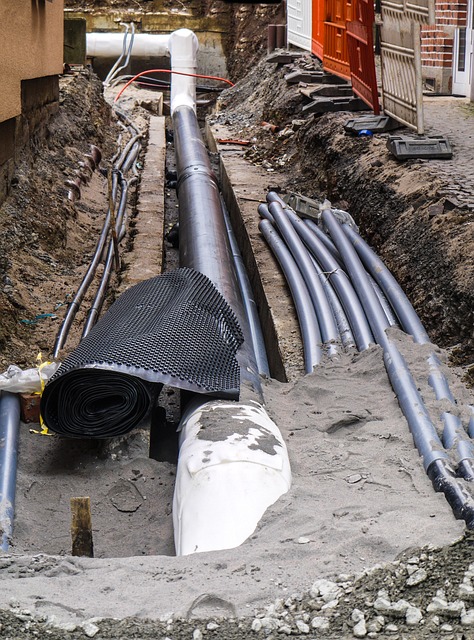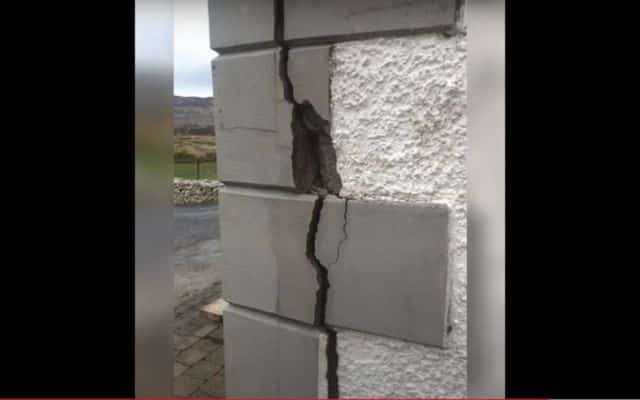Due to capacity constraints, less than two out of three self-builders get their applications for sewage connections approved by NI Water, as the utility rolls out a new application portal.
In this article we cover:
- Details of the new NI Water application portal
- New requirements for building above a public sewer, as may be the case for an extension
- Capacity constraints in NI and what’s being done about them
- How many single unit connections were approved, conditionally approved and refused
- Why NI Water applications are being refused
- Lack of investment in infrastructure
- Self-builder’s alternatives to a mains connection
- Plans to roll out storm water management for new builds, renovations and replacement builds
Capacity constraints in the mains water and sewer networks are holding back development in NI, Gerry Curran of Northern Ireland Water (NIW) told delegates at the Belfast Building for Tomorrow conference in March 2023.

Much of the constraints have to do with a “legacy of prolonged, chronic underinvestment in our wastewater infrastructure”, Curran said. “Development has continued and used up any surplus capacity.” Some water capacity issues also exist, with more developing, especially within Belfast, he added.
Wastewater capacity constraints affect 80 per cent of properties in NI, Curran said, especially in cities and towns. Many wastewater treatment plants also work above their designed capacity, leading to discharges to watercourses and flooding.
There is a capital works programme underway, although Curran said the “NI Executive must secure the funding necessary to deliver the investment in water and wastewater required for NI”.
Switch to online applications
NIW expanded its Self Service Portal, allowing self-builders to apply online for a new water or wastewater connection. The portal went live in March.
Automated prompts will guide you through the process and you will be able to communicate via portal notifications with assessors working on your application.
Also know that from October 2022, NIW introduced an updated application for building over or near a public sewer. This can be especially relevant to those extending their proprety. Changes include a new Design Stage Statement for the owner and the contactor.
Even though self-builders can now register online for most requests, paper applications will continue for:
• Build Over Process – A236, Build Over Record Request, and Realignment /Diversion of a Public Sewer or Watermain – A247
• Standpipe Licencing, Impact Assessments and Pre-Development Enquiry and Record Requests
• Lead Pipe Replacement – A079 LPR
• Separation of Supply – A079 SOS and Sewer and Watermain Requisition/Extension – A154 and A076

Self-build connection approvals
When applying for a connection to mains sewage, NIW can provide an unconditional approval, conditional approval or a refusal. Development cannot go ahead if there is no provision on site for wastewater treatment.
If a mains connection is refused by NI Water, self-builders can install an onsite wastewater system instead, which is essentially a mini treatment plant in the garden. In that case, self-builders have to apply for a consent to discharge to the Department of Agriculture, Environment and Rural Affairs.
Applications for consent to discharge are done online now too. Most applicants get approval as long as the treatment system they chose is compliant and reaches high levels of water treatment.
Wells are the alternative to mains water connections.
From July 2021 to December 2022, Curran said that 58 per cent of applications for a wastewater mains connection related to single units.
During the six month period 2,331 (61 per cent) of single unit applications were approved unconditionally, 1,240 were approved with response specific conditions (32 per cent) and there were 280 refusals (7 per cent).
Unconditional approvals are given when NIW is “satisfied that the development proposal may be served”. A conditional approval is when NIW allows the development to go ahead subject to conditions, such as no connection to the network until a certain phase of infrastructure development is complete.

Refusals occur where NIW has established a detrimental risk which may not be resolved by a condition. Developers can work with NIW to resolve the issue but where a statutory nuisance is likely or non compliance with a Pollution Prevention and Control permit, then a recommendation to refuse will be returned to the Planning Authority.
NI Water is working alongside developers to fund new infrastructure in the case of new developments, in the context of an application being refused or ahead of the planning application.
The minimum requirements for connection are set out in the British Water COP Flow and Load assessment and NIW Asset Standard (Wastewater Flow & Population Determination). The maximum loading for a six bedroom house is 480g/d BOD.
Stormwater
Stormwater management is an issue, Curran added, especially within cities. Rainfall can lead to flooding but also add pressure on wastewater systems leading to discharge to watercourses.
While there will be no requirements put on existing structures to introduce sustainable urban drainage systems (SUDS), new builds, replacements builds and extensions could see SUDS become a condition of planning approval.

SUDS is an ambition laid out in NI Water’s strategy, but it is not a requirement. Curran says new builds and extensions should use SUDS unless “there are practical reasons for not doing so”. He added developments “should aim to achieve greenfield run off rates and ensure that surface water run off is managed as close to its source as possible”.
The drainage hierarchy as laid out by NI Water is:
1. Store rainwater for later use
2. Use infiltration techniques, such as porous surfaces in non clay areas
3. Attenuate rainwater in ponds or open water features for gradual release
4. Attenuate rainwater by storing in tanks or sealed water features for gradual release. This should help to reduce the overall loading on the combined network and therefore help manage the risk of the additional foul load.











